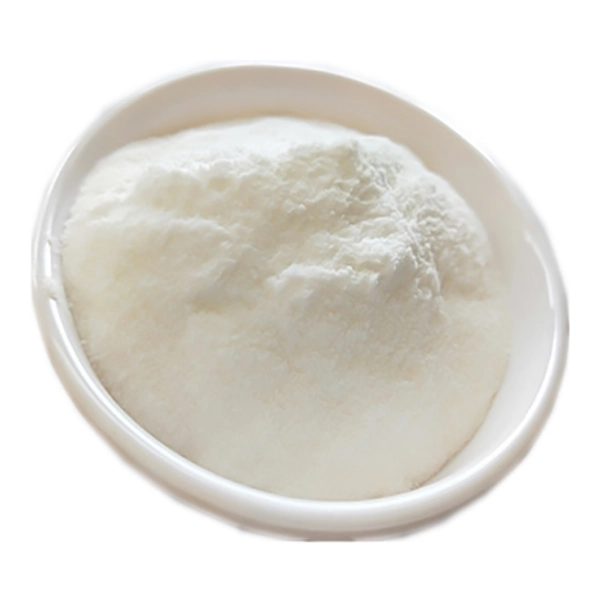+86-15212299029
- All
- Product Name
- Product Keyword
- Product Model
- Product Summary
- Product Description
- Multi Field Search
Views: 220 Author: tcchems Publish Time: 2025-11-24 Origin: Site











Content Menu
● Understanding ATP and Its Structure
>> What is ATP?
>> The Role of Phosphate Groups
● The Process of ATP Hydrolysis
>> What Happens During Hydrolysis?
● Importance of ATP Hydrolysis in Cellular Functions
● The Broader Implications of ATP Hydrolysis
>> Related Questions and Answers
Adenosine triphosphate (ATP) is often referred to as the energy currency of the cell. It plays a crucial role in various biological processes, providing the energy necessary for cellular functions. One of the most significant reactions involving ATP is its hydrolysis, where it loses a phosphate group. This article explores what happens during this process, the significance of the released energy, and the broader implications for cellular metabolism.

ATP is a nucleotide composed of three main components:
- Adenine: A nitrogenous base.
- Ribose: A five-carbon sugar.
- Phosphate Groups: Three phosphate groups (alpha, beta, and gamma) linked by high-energy bonds.
The structure of ATP allows it to store and release energy efficiently. The bonds between the phosphate groups are known as phosphoanhydride bonds, and they are considered high-energy due to the repulsion between the negatively charged phosphate groups.
The energy stored in ATP is primarily found in the bonds between its phosphate groups. When ATP is hydrolyzed, it typically loses the terminal phosphate group (gamma phosphate), resulting in the formation of adenosine diphosphate (ADP) and inorganic phosphate (Pi). This reaction is crucial for energy transfer within the cell.
When ATP undergoes hydrolysis, it reacts with water, breaking the bond between the last phosphate group and the rest of the molecule. The reaction can be summarized as follows:
\[ \text{ATP} + \text{H}_2\text{O} \rightarrow \text{ADP} + \text{Pi} + \text{Energy} \]
This reaction releases energy that can be harnessed for various cellular activities, such as muscle contraction, active transport, and biosynthesis.
The energy released during ATP hydrolysis is approximately 30.5 kJ/mol. This energy is utilized by the cell to perform work. The process of breaking the high-energy bond is exergonic, meaning it releases energy, which is then used to drive endergonic reactions (reactions that require energy input).
ATP hydrolysis is fundamental for numerous cellular processes. Here are some key functions that rely on the energy released from ATP:
1. Muscle Contraction: ATP provides the energy required for muscle fibers to contract. The energy released during ATP hydrolysis is used to power the movement of myosin heads along actin filaments.
2. Active Transport: Cells often need to transport substances against their concentration gradient. ATP hydrolysis powers transport proteins, such as the sodium-potassium pump, which maintains the electrochemical gradient across cell membranes.
3. Biosynthesis: ATP is essential for synthesizing macromolecules, including proteins, nucleic acids, and lipids. The energy from ATP hydrolysis drives the formation of these complex molecules from simpler precursors.
4. Signal Transduction: ATP is involved in signaling pathways, where it acts as a substrate for kinases that phosphorylate proteins, altering their activity and function.
Cells continuously regenerate ATP from ADP and inorganic phosphate through processes such as cellular respiration and substrate-level phosphorylation. This regeneration is vital for maintaining the energy balance within the cell.
ATP hydrolysis is a central component of metabolic pathways. It links catabolic reactions (which release energy) to anabolic reactions (which consume energy). For example, during cellular respiration, glucose is broken down to produce ATP, which is then used for various cellular functions.
The concept of energy coupling is essential in biochemistry. It refers to the use of energy released from one reaction to drive another reaction. ATP hydrolysis is a prime example of this, as the energy released can be coupled with endergonic reactions, allowing cells to perform work efficiently.
The ability to harness energy from ATP hydrolysis is a fundamental aspect of life. It is believed that the evolution of ATP as an energy currency was a significant step in the development of complex life forms. The efficiency of ATP in energy transfer has allowed organisms to develop intricate metabolic pathways and cellular processes.
In summary, when ATP loses a phosphate group, it converts to ADP and releases energy that is crucial for various cellular functions. This process is not only vital for individual cells but also for the overall metabolism of living organisms. Understanding ATP hydrolysis and its implications provides insight into the fundamental processes that sustain life.

1. What is the difference between ATP and ADP?
- ATP (adenosine triphosphate) has three phosphate groups, while ADP (adenosine diphosphate) has two. The difference in the number of phosphate groups is what gives ATP its energy-storing capability.
2. How is ATP regenerated in the cell?
- ATP is regenerated from ADP and inorganic phosphate through processes such as cellular respiration and substrate-level phosphorylation.
3. What role does ATP play in muscle contraction?
- ATP provides the energy necessary for muscle fibers to contract by powering the movement of myosin heads along actin filaments.
4. Why is ATP considered the energy currency of the cell?
- ATP is considered the energy currency because it stores and transfers energy for various cellular processes, making it essential for life.
5. What is energy coupling in biochemistry?
- Energy coupling refers to the use of energy released from one reaction (such as ATP hydrolysis) to drive another reaction that requires energy input.
Hot Tags: China, Global, OEM, private label, manufacturers, factory, suppliers, manufacturing company



